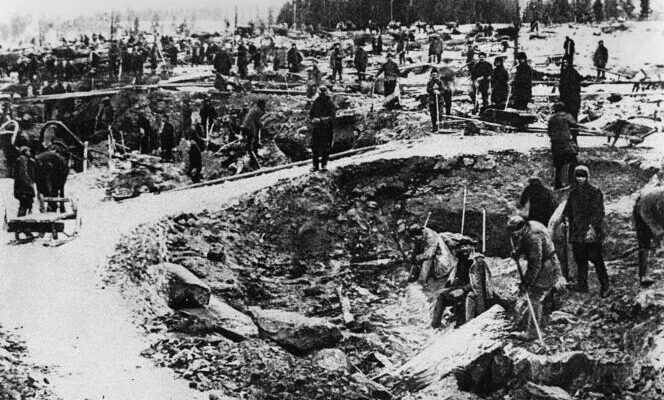IFifty years ago, on December 28, 1973, was published in Russian in Paris, by YMCA Press, The Gulag Archipelago, by Alexander Solzhenitsyn. This book, which was translated into a number of languages the following year, denounced the Soviet labor camps. The document is sometimes seen as the moment when the concentration camp system at work behind the Iron Curtain was revealed to the West. To read The world, it is not so. If it was undoubtedly a landmark, if it had a before and an after, this literary essay seems above all to have been the final proof which was opposed to those who always denied the existence of this oppressive system.
From 1948, “Gulag” appears in the August 8 and 9 edition of World, from the pen of André Pierre, who, from Paris, deals with news necessarily shrouded in opacity coming from Stalin’s country. It appears strangely in an article in the economic section dealing with the exploitation of the Kolyma gold basin.
For lack of “free workers” ready to go into exile in these inhospitable regions, the workforce was drawn from political or war prisoner camps. “The very harsh cold to which they were not accustomed decimated their ranks very quickly, he writes. The entire organization that bears the name “Dalstroi” depends on the special department of the Ministry of the Interior called “Gulag” (central administration of labor camps). »
“A vast reservoir of slaves”
Even before this date, several articles already refer to the “forced labor camp” that the communists prefer to baptize “corrective work” and present as healthy and humanist substitutes for prison. Journalists rely on the stories of defectors like Viktor Kravchenko, author in 1947 of I chose freedom!.
So many testimonies, however, treated with caution. On August 5, 1949, the newspaper was more trenchant in its bulletin from abroad, the ancestor of today’s editorials. It evokes “irrefutable details” on the existence of“a vast reservoir of slaves condemned to the hardest work on the edges of the Arctic or in the depths of Siberia”. And to cite the figure of ten million deportees.
On August 17, 1950, André Pierre published “New testimonies on forced labor in the USSR”, a definitive article on the Stalinist concentration camp system and thus defined its philosophy: “The individual is nothing, the work is everything. It perishes but the work is imperishable, and that alone matters for History. »
You have 65% of this article left to read. The rest is reserved for subscribers.
